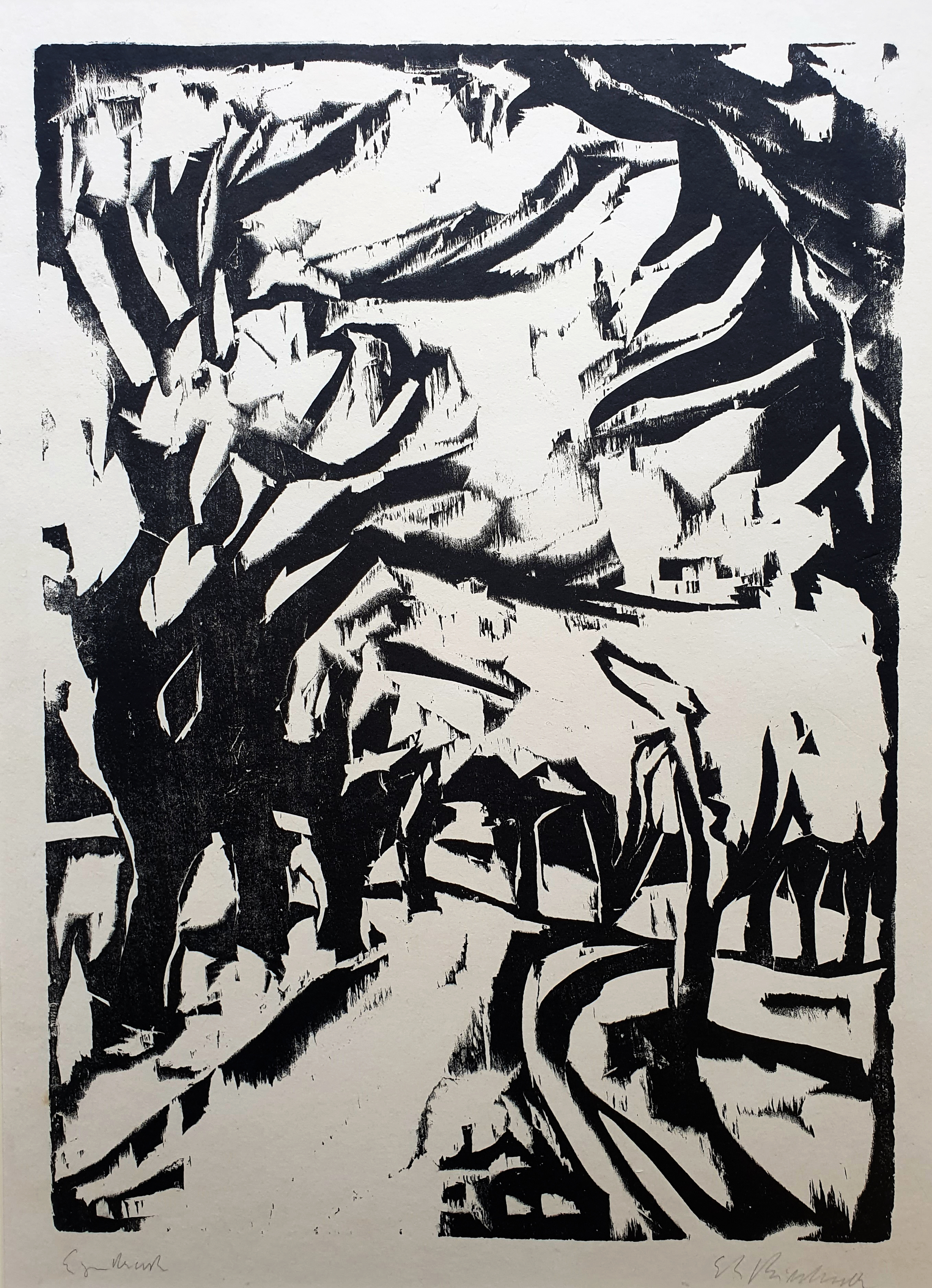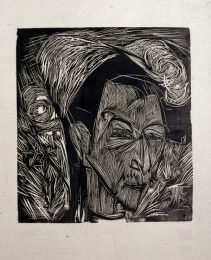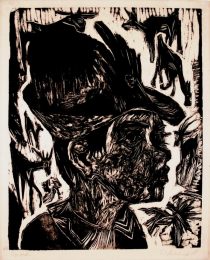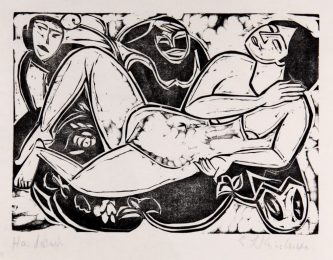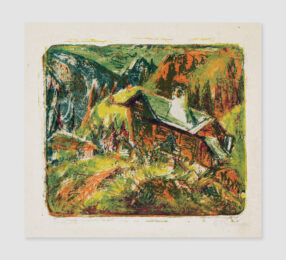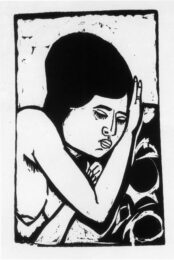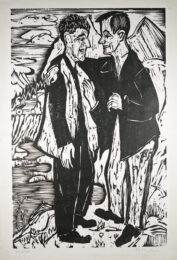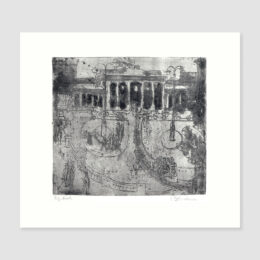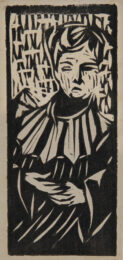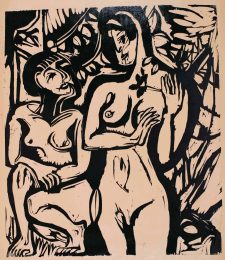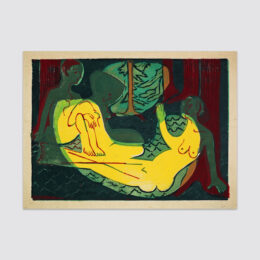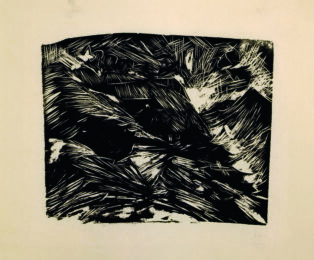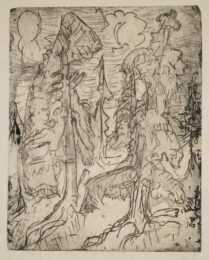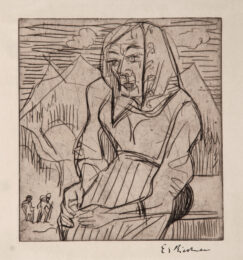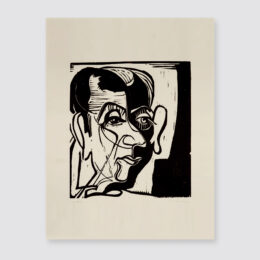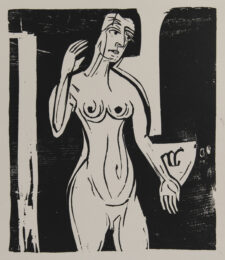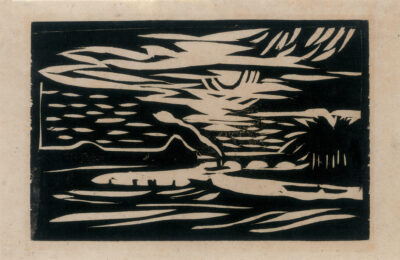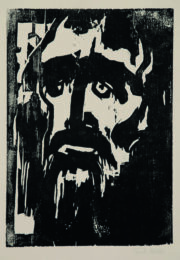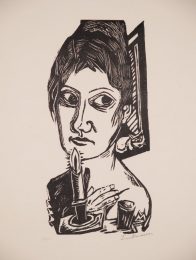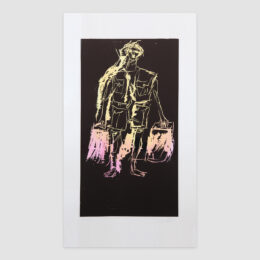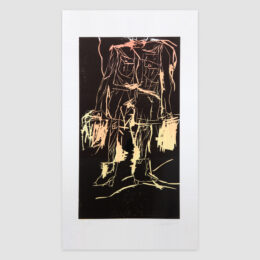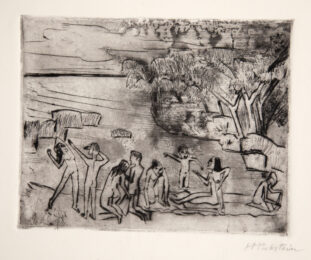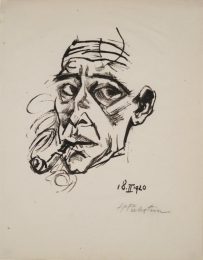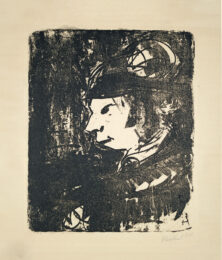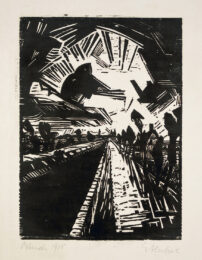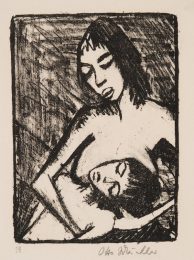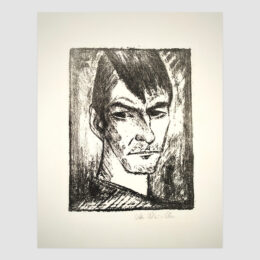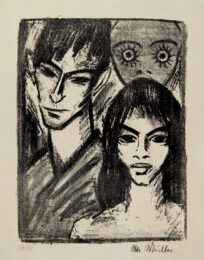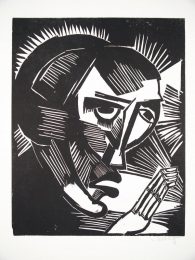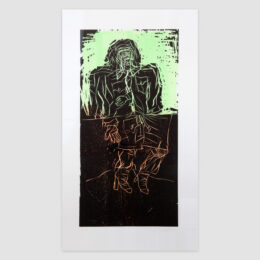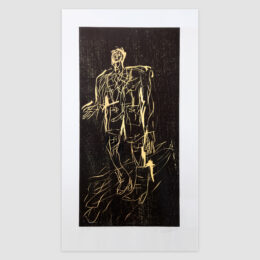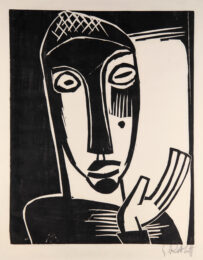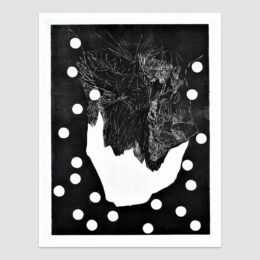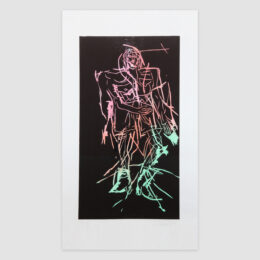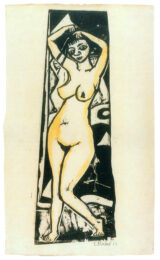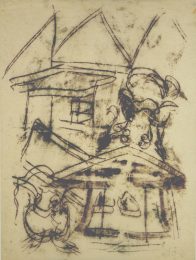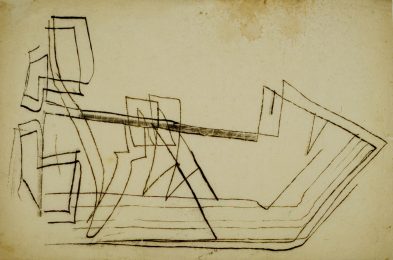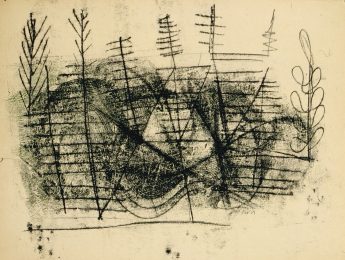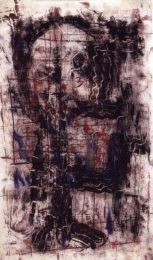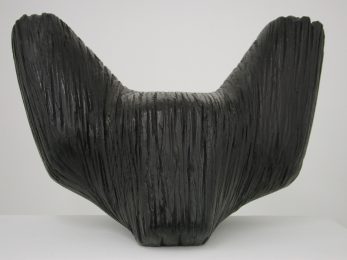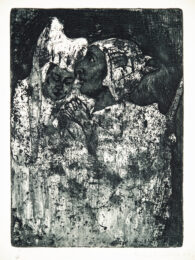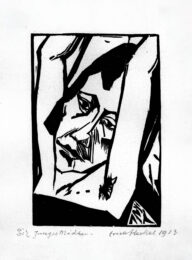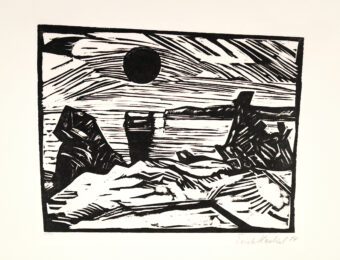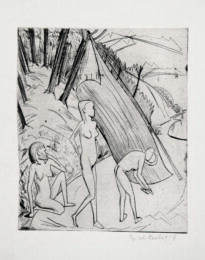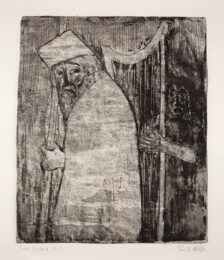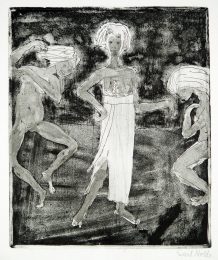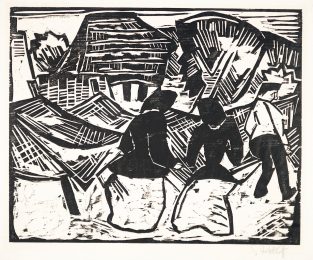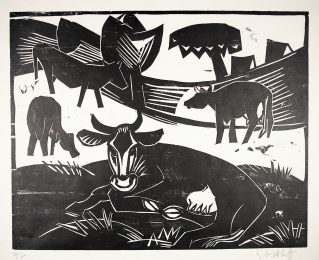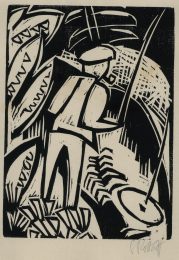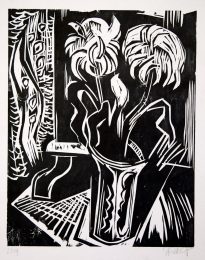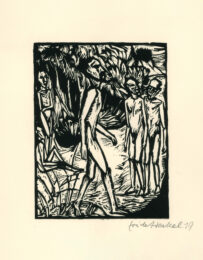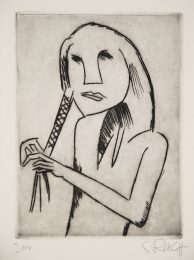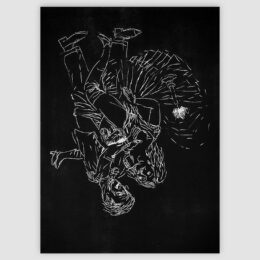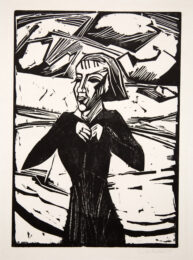Details — Click to read
On Japan. One of 6 prints by the artist known to date. Signed lower right and inscribed ‘Eigendruck’ lower left.
Gercken 282. earlier catalogues raisonnés: Schiefler H 100. There the description by Kirchner and Schiefler:
‘A path stretching into the picture, arched over by the sweeping light-coloured crowns of blossoming trees.’
Further copies in the following collections: Hanover, Sprengel Museum. Cf. the painting ‘Blühende Bäume II’, 1909, Gordon 0061.
In his woodcut, Kirchner shows an avenue of flowering trees on the left, as well as a path, the further course of which is withheld from the viewer by a curve to the right. The representation of the trees is very dynamic and testifies to Kirchner’s creative urge. The liveliness with which the artist devotes himself to and depicts his motif shows his great willingness to experiment. He skilfully stages supposedly unspectacular perspectives and proves his very good eye to choose motifs. Probably he was also excited by the challenge of finding the right ratio of black and white in the light and shadow guidance, which he ultimately did best.
Kirchner’s woodcut comes from the heyday of Dresden’s “Brücke” style. In 1905 he and his fellow students from his architecture studies Fritz Bleyl, Erich Heckel and Karl Schmidt-Rottluff founded the artists’ association “Brücke”. Together they worked out their expressionist group style. The “quarter-hour” files in the studio became legendary, in which they put their motifs on paper in a very short time and in abstract form with just a few lines. The rapid understanding of the motif is also expressed in this woodcut. Kirchner was also a busy stroller and documented many places in the city of Dresden. His numerous surviving drawings from this period testify to these excursions. He often stayed in the Great Garden and drew the Palais there or, among other things. the flower borders. This motif may also come from there or from the wooded surroundings of Moritzburg Castle, not far from the city, where the artist also stayed at the ponds with his artist friends in the summer of 1909 for drawing and painting.

